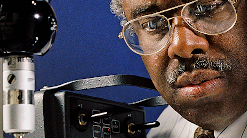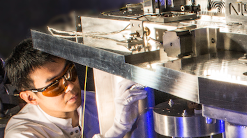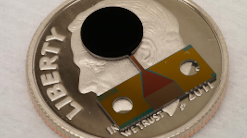Universal Constants: A New Foundation of Measurement | NIST

Scientific and technological progress continues to drive rapid changes in almost every aspect of daily life. Whether it is understanding the tech that you carry in your pockets, making informed health care decisions, bringing valuable skills into the workforce, or understanding global climate data, you need to be scientifically literate.
Sometimes, the assumptions and tools we have used for decades or centuries become speed bumps on the road to future progress. In 2018, the world's metrologists made the landmark decision to define the last of the SI units in terms of natural constants - values that do not change over time or location. This event provides an exciting incentive to build your understanding of the essential behavior of these foundations of the universe.
In this curriculum, you'll follow the work of metrologists from the National Institute of Standards and Technology as they move from artifacts to measurements based on universal constants. You'll connect these changes to your knowledge of physical science and mathematics, and you'll learn how they are essential to continued progress in science and engineering. Then you will master these new SI units to explore solutions to a measurement challenge.
Acknowledgments:
This collection was developed in partnership with JASON Learning and the National Institute of Standards and Technology.

Introduction - Redefining Measurement
An artifact is something that we use to compare—something ancient or something we protect for reference. Over centuries we’ve used many artifacts for measurement, but their reliability has varied. It’s hard for scientists across the world to work together when their rulers, balances, and clocks are not quite the same. It’s time to move toward something universal.

Lesson 1 - Measure - Pursue Accuracy
How much? How far? How long? These questions are answered by measurement. But there’s another question we must answer: How accurate? The response is often “as accurate as needed to answer the question.” Accuracy depends on a wide variety of factors, but at its core, it begins with a standard. Abandoning artifacts, today’s scientists and engineers use universal constants for the accuracy we need.

Lesson 2 - Standardize - Achieve Precision
Ancient scientists often worked alone. But in our interconnected world, science and technology are developed in dialogue among people across geopolitical and linguistic boundaries. To work across time and space, we need precision. What each individual does must be repeatable and reproducible—first time, every time. That depends on precise tools, precise techniques, and excellent communications.

Lesson 3 - Innovate - Get Excited
Phenomena that are very small, very fast, or very far away become within the reach of today’s improved measurement instruments and processes. How does that impact research and development? Manufacturing? Quality control? The future is bright!

Conclusion - The Next Frontier
Imagine what we can achieve in the future, with the tools that universal constants can provide. From investigations of the smallest pieces of matter to the largest objects in the universe, constants will show us the way and make it possible to explore new frontiers. The answers we find today often lead to new questions that measurement can help us answer.


